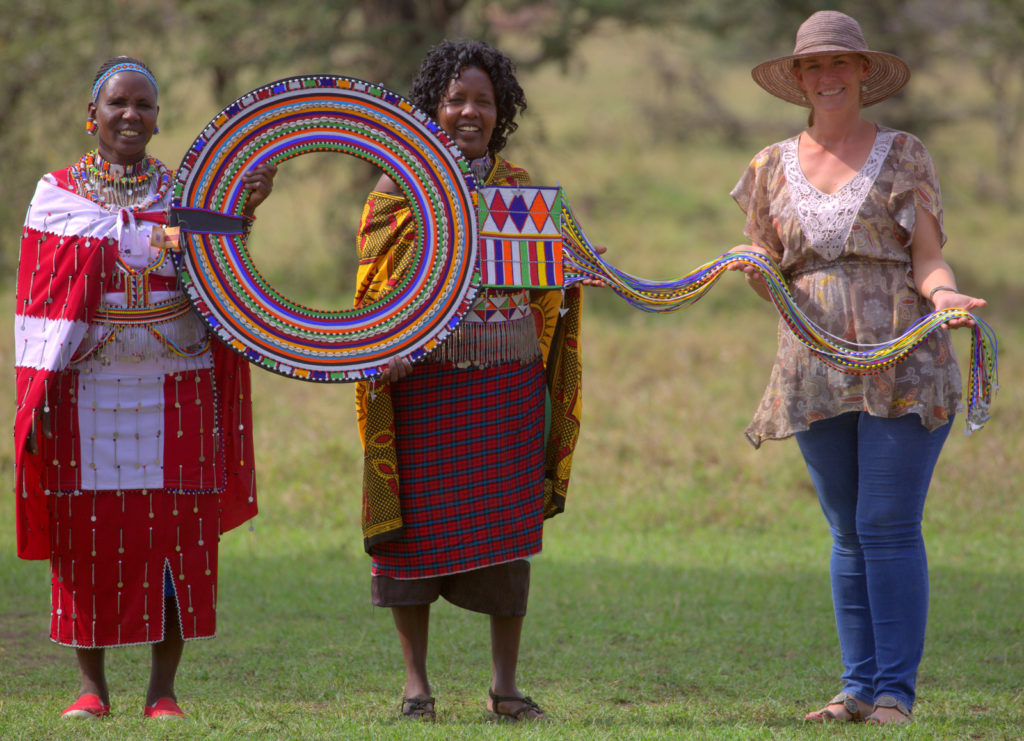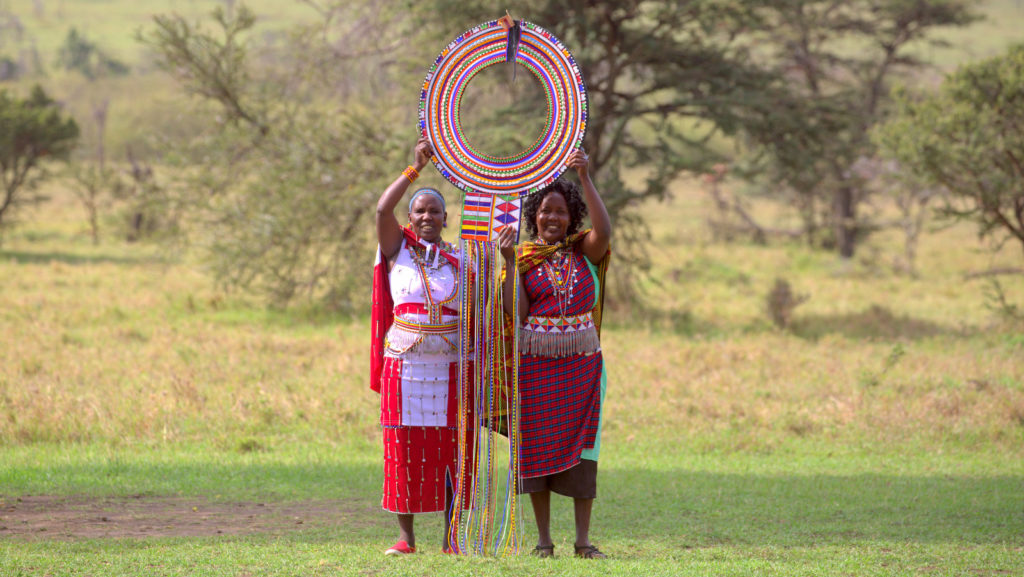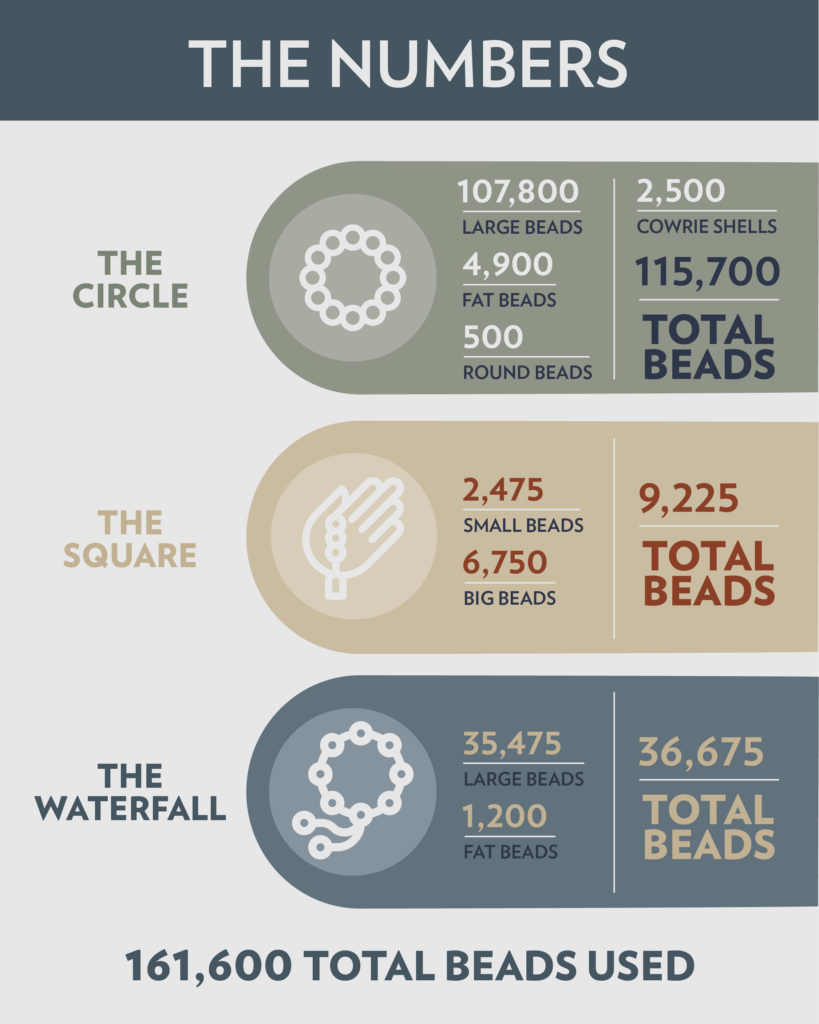Supersized Traditional Maasai Necklace
In 2009, we became a founding member of the Mara Naboisho Conservancy and since then, our bold, and often pioneering, investments have helped to create viable conservation economies and benefits as well as job opportunities for the local people, too.
Asilia’s connection to the Mara Naboisho Conservancy
Becoming a partner to the Naboisho Conservancy was one of the biggest investments into new areas that we had ever made. Today, the conservancy is an award-winning model for community-based conservation. Through various initiatives over the years, we have actively supported the communities by not only providing employment but also through supporting local schools and villages, youth programmes like Twende Porini, and empowering woman by selling their beautiful beadwork in our shops. We provide additional support through sponsoring scholarships with the Koyaki Guiding School, providing the seed funding for Maasai Mara Wildlife Conservancies Association (MMWCA), being The Maa Trust’s biggest tourism partner, as well as having long-standing relationships with Kenya Wildlife Trust and The Mara Predator Conservation Project. Through all of these efforts and collaborations, we are proud to say that we have been one of the major role players to help make the conservancy a success.
The Mara’s largest enkarewa
Naboisho, which is located within the Mara Naboisho Conservancy, received a recent upgrade which included the addition of a brand new pool and lounge area. While deciding on which decor would be used, the one item still missing was a centrepiece for above the fireplace, which is where the idea for the Mara’s largest Enkarewa came about…
The Enkarewa is a traditional hand-made Maasai wedding necklace worn by brides and passed down through the generations. The colours and designs used in each unique necklace symbolise the coming together of the families as well as the entire community. Intricately hand-made using many colourful beads, the Enkarewa has become a symbol of the Maasai culture, and with Asilia being one of the founding members of the Mara Naboisho Conservancy, the symbolism and meaning behind the Enkarewa perfectly illustrates what our partnership with the conservancy is all about: a lifetime commitment between Conservation, Community and Tourism.

Noormesuku Kereto (left) with Rose from The Maa Trust who oversaw this project and Helen, Naboisho Camp Manager.
We decided to keep the traditional bright Maasai colours and have the Enkarewa made in the most traditional way possible. We decided to work with The Maa Trust, supporting their local project whereby women from the community can benefit directly, rather than buying expensive artwork from Nairobi or further afield. In May 2019, the process began. We met with Resian, the manager of the Maa Beadwork Project. In July 2019, we received our first glimpse of the masterpiece in progress – the design had caused quite a stir and buzz amongst the 470 women who do beading for The Maa Trust.
Noormesuku Kereto is the woman behind the Mara’s largest Enkarewa – she spent over 2 months working to create this unique and beautiful piece of artwork for us and in September 2019, we received the completed Enkarewa.

Noormesuku Kereto (left) with Rose from The Maa Trust and the Mara’s largest Enkarewa.
Eshili – The finishing touch
Eshili are traditional Maasai “bling”, made from metal and hand-cut into triangles to be used for jewellery. The Maa Trust had a tough time finding a local lady who still knew the age-old way of making these silver, triangular disks among their group of beading women. Noormeshuki Kereto was the only women with this knowledge – she explained how it was done, and that this was actually the hardest part of making the Enkarewa. Two old cooking pots were used, their metal was beaten with rough stones until it was flat and thin. This beaten metal was hand-cut cut into pieces using a panga and metal scissors were used to cut out the unique shapes which were traced onto the metal.

More Culture & Communities Articles

Supersized Traditional Maasai Necklace
21 October 2019In 2009, we became a founding member of the Mara Naboisho Conservancy and sin...

#PeopleOfAsilia: Our Homegrown Walking Guides
08 October 2019Have you ever wondered what it takes to become a walking guide in the African...

Coming Together for Mara Naboisho
24 April 2020Asilia is thrilled to announce that we're partnering with the Mara Naboisho C...

Saving The Planet From Home: Earth Day 2020
21 April 2020Each year, on the 22nd of April, the world celebrates Earth Day. This year ma...






